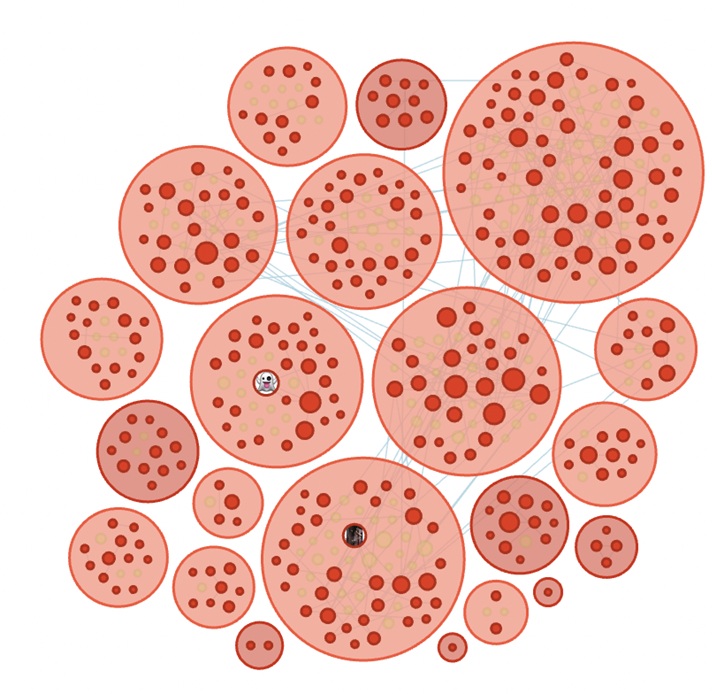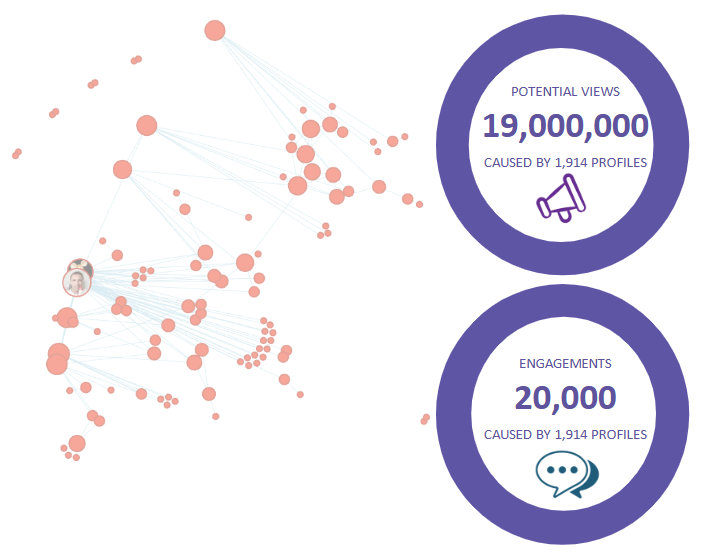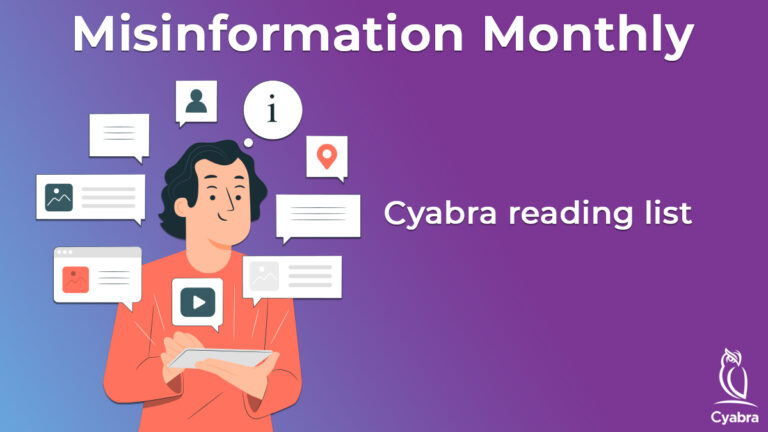This blog post is based on a Cyabra live session guest starring Philippe Borremans, renowned crisis communications expert and author of “Understanding and Combating Rage Farming”, and editor of Wag The Dog Newsletter.
This guide will cover:
- Rage farming: what is it, and why does it matter?
- The anatomy of a coordinated attack
- How to recognizing the warning signs
- How to build you organization’s defense strategy
- The strategic approach: how to respond to rage farming
- Understanding the bigger picture: Cultural framing and societal challenges
- How to building long-term resilience
It is not news to anyone that social media has evolved into a battleground where rage often trumps authentic discourse. However, while companies were once worried about spontaneous backlash and customer frustration, they now have a new fear to keep them up at night: a deliberate weapon used to manipulate public sentiment and damage reputations.
This phenomenon, known as rage farming, is a sophisticated tactic that hijacks brand narratives, polarizes audiences, and incites coordinated attacks. Understanding how rage farming operates and learning how to defend against it is essential for any organization or brand navigating the complexities of online reputation management.
Drawing from his extensive experience working with global organizations and crisis situations, Philippe Borremans breaks down the mechanisms of rage farming and shares practical strategies for detection, response, and recovery. In this playbook below, we explore the key takeaways from Philippe’s expertise to help brands and organizations prepare for and mitigate the risks associated with rage farming.
What Is Rage Farming and Why Does It Matter?
Rage farming is a deliberate and organized tactic that falls under the broader umbrella of disinformation. Unlike genuine outrage, rage farming is driven by an agenda and designed to manipulate emotions, distort narratives, and provoke reactions. Philippe Borremans explains:
“Rage farming is part of disinformation. It’s close to misinformation and malinformation, and it has an agenda behind it. It’s deliberate manipulation, with a big M: sophisticated, monetized, and not based on false facts – but on false narratives.”
This tactic is monetized, often generating revenue for bad actors and platforms alike. It exploits social media algorithms that prioritize engagement – whether positive or negative – rewarding content that sparks emotional reactions. Rage farming is not random; it’s orchestrated by individuals or groups who possess deep knowledge of social media platforms and human psychology.
Philippe emphasizes the emotional core of rage farming: “It’s a technique completely geared to trigger our emotions, feelings, and biases. The bad actors know exactly how to trigger the algorithm and which buttons to push to organize rage into a campaign.”
By playing on fears, cultural values, and identity, rage farming campaigns hijack discussions and create crises that brands might not have anticipated. These campaigns can escalate quickly and become difficult to counter, especially when the outrage taps into larger cultural or political conflicts.
Rage Farming at Work: The Anatomy of a Coordinated Attack
Rage farming typically begins with a legitimate trigger event, but the issue is then twisted by to mislead audiences. The process unfolds in several stages:
- Trigger Event: A corporate announcement, policy change, or marketing decision acts as the seed for the campaign.
- Narrative Distortion: Bad actors create false narratives or remove critical context to create a misleading storyline.
- Amplification: Coordinated accounts, bots, and fake profiles amplify the distorted narrative, leveraging social media algorithms.
- Emotional Engagement: Average users encounter these messages, triggering emotional responses like fear, anger, or anxiety.
- Crisis Eruption: As the message spreads, a broader crisis or reputational issue develops.
Philippe highlights two well-known examples that demonstrate this process:
- United Airlines: A diversity initiative was distorted into a false narrative suggesting it compromised safety standards, playing on people’s fear of flying.
- Bud Light: Partnering with an influencer became a focal point for conservative groups to frame the brand as undermining traditional values, tapping into the “woke culture” debate.
Both cases started with organic backlash, but were weaponized through emotional manipulation and false narratives. This illustrates how rage farming can turn even routine corporate decisions into full-blown crises.

In the picture: the Bud Light crisis – the backlash was first promoted by authentic profiles, but was then picked up by fake accounts attacking the brand.
Recognizing the Warning Signs
Early detection is crucial to mitigating the damage caused by rage farming. Philippe outlines several key indicators that communications teams can watch for:
- Coordinated Patterns: Multiple accounts sharing similar messages or catchphrases in a short timeframe, often with slight variations but consistent framing.
- Unusual Engagement Spikes: Sudden increases in comments, shares, and reactions driven by emotional responses rather than reasoned discussion.
- Context Removal / Lack of Nuance: Messages tend to be provocative, black-and-white, and devoid of context or balanced perspectives.
- Unnatural Spread: Rapid and widespread dissemination that does not follow typical organic growth patterns.
Cyabra’s experience shows that these tactics are not limited to large, high-profile brands but are increasingly seen across organizations of all sizes and sectors, including individuals in leadership roles.
Building Your Organization’s Defense Strategy
Preparation is the cornerstone of effective crisis management, especially against rage farming. Philippe recommends building what he calls a “Truth Bank”, a repository of accurate, factual information about your organization’s policies, positions, and practices. This resource should be:
- Comprehensive: Covering key topics that might become targets of rage farming.
- Accurate and Traceable: Facts supported by data, industry standards, and legal compliance.
- Accessible: Organized for quick retrieval to enable swift, factual responses.
He stresses the importance of focusing responses on your core audiences – employees, stakeholders, partners, and customers – rather than trying to engage with every enraged individual online:
“Don’t try to attack the originators or respond to people caught up in the rage farming. Instead, focus on the people that matter to you.”
Moreover, organizations should coordinate closely with their IT and security teams, as rage farming attacks can sometimes precede or accompany digital or physical security threats. Enhancing monitoring, access controls, and threat assessments can provide additional layers of protection.
Responding to Rage Farming: A Strategic Approach
Timing and tone are critical when responding to rage farming. Philippe advises a measured, factual, and unemotional response. Key steps include:
- Verification: Quickly assess the source, scope, and nature of the attack.
- Preparation: Use your truth bank to craft clear, factual responses without defensive or emotional language.
- Activation: Communicate prominently across owned channels, focusing on facts and your core audiences.
- Assessment and Adjustment: Monitor the impact and be ready for a prolonged engagement, as these campaigns can last much longer than typical crises.
Philippe warns against feeding the rage farming machine by engaging emotionally or attacking the attackers, as this only amplifies the problem:
“If you would go into the defense or use emotion, you are feeding the beast – and that’s what algorithms are waiting for.”
Philippe also advises against publicly attacking the originators in communications responses, as this often fuels the campaign further. Instead, identifying the source is a task for IT security and law enforcement.
Leadership support and internal communication are also vital, as such attacks can have significant effects on employee morale and mental health. Providing clear guidance and support for communications teams and employees can help maintain organizational resilience.

In the picture: a network of fake profiles attacking a major brand.
The Bigger Picture: Cultural Framing and Societal Challenges
Rage farming can affect any industry or organization, regardless of size or sector. While high-profile brands that take strong stances on societal issues may attract more attention, no one is immune. Philippe notes:
“There is not one single brand or industry that is safe from this. It can happen everywhere, from large global brands to small organizations.”
Rage farming thrives in a polarized and emotionally charged environment. It is vital to remember that many people caught up in rage farming don’t even know they’re part of it. Philippe explains the role of cultural framing in these campaigns:
“They need cultural conflicts, political conflicts, and polarization of society to work. They play on emotional resonance tied to values, identity, and fears.”
This makes rage farming difficult to counter with simple fact-checking, as it taps into deeply held beliefs and biases. Brands and organizations must acknowledge that they cannot change the broader cultural context overnight – but they can prepare to respond effectively within it.
While complete victory may be elusive, the goal is to neutralize the rage and maintain trust with key audiences. Philippe agrees with the sentiment that winning is rare but managing the crisis effectively is possible:
“You never win a crisis. The best you can do is neutralize the rage and state your position clearly to the people that matter.”
Building Long-Term Resilience
Rage farming requires ongoing vigilance and continuous improvement. Organizations should invest in:
- Stakeholder Relationships: Maintain strong, ongoing communication with media, partners, and communities.
- Ongoing Education and Training: Regularly train communications teams on rage farming tactics and response strategies.
- Simulation Exercises: Conduct tabletop drills and scenario planning to prepare for rapid response.
- Protocol Review: Ensure crisis protocols allow for swift decision-making without unnecessary delays.
- Industry Collaboration: Share knowledge and develop collective defenses with peer organizations.
These steps help organizations stay ahead of evolving disinformation tactics and protect their reputations in an increasingly hostile online environment.

In the picture: an example of fake profiles’ impact on brands.
Conclusion
Rage farming is a growing challenge for brands and organizations in the digital age. By understanding its mechanisms, recognizing early warning signs, and preparing a measured, fact-based response, organizations can mitigate the reputational risks it poses. As Philippe Borremans highlights, the key lies in knowing your truth, focusing on your core audiences, and resisting the emotional triggers that rage farming exploits.
While the cultural and societal factors that enable rage farming are complex and difficult to change, organizations that invest in preparation, collaboration, and continuous learning will be better equipped to weather these storms. In an era where online outrage can escalate quickly into real-world consequences, being ready is not just an advantage – it’s a necessity.
To learn more about rage farming and how to defend against it, explore Philippe Borremans’ comprehensive guide and online course, and consider building a truth bank as part of your crisis communications toolkit. Stay vigilant, stay factual, and protect your brand’s reputation in the age of rage farming. To learn more about tools that can help detect and fight rage farming, contact Cyabra.


